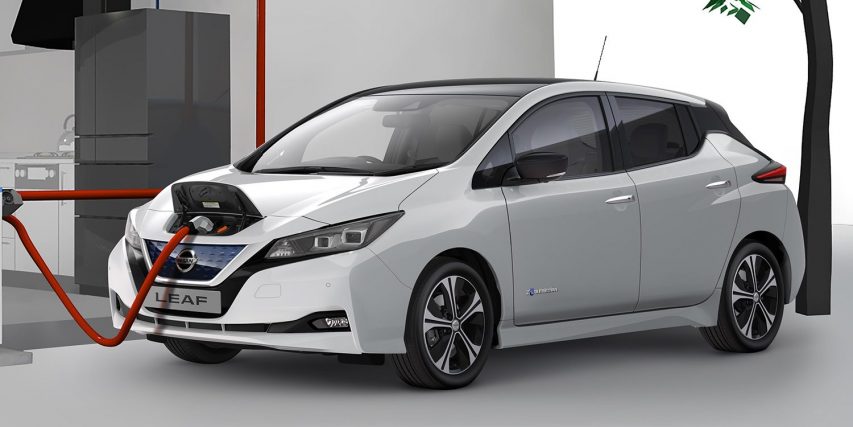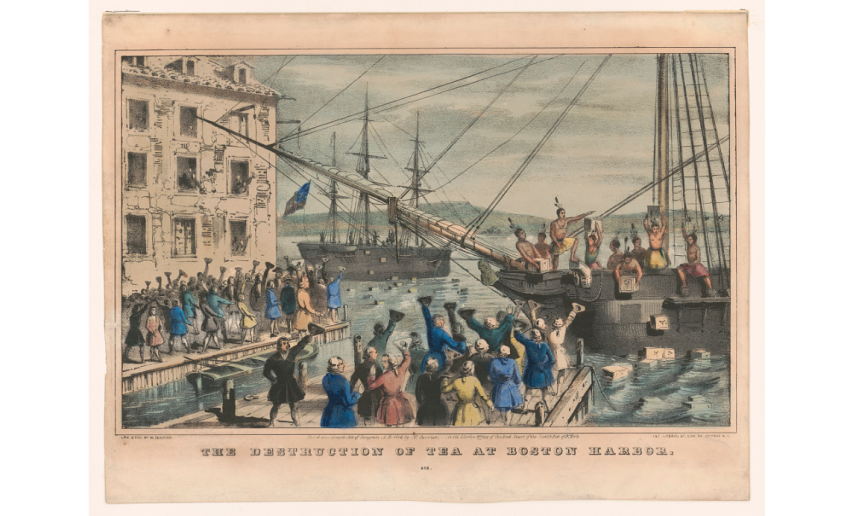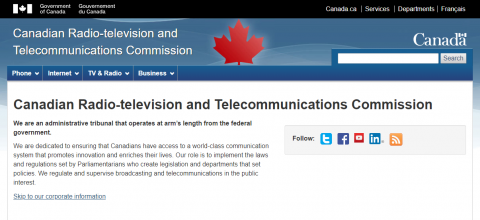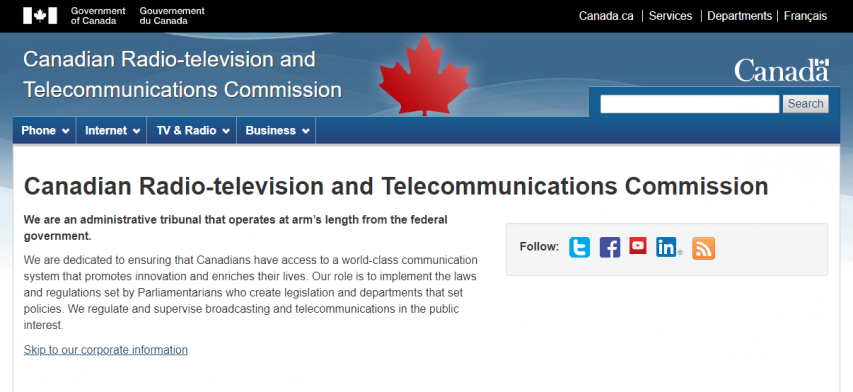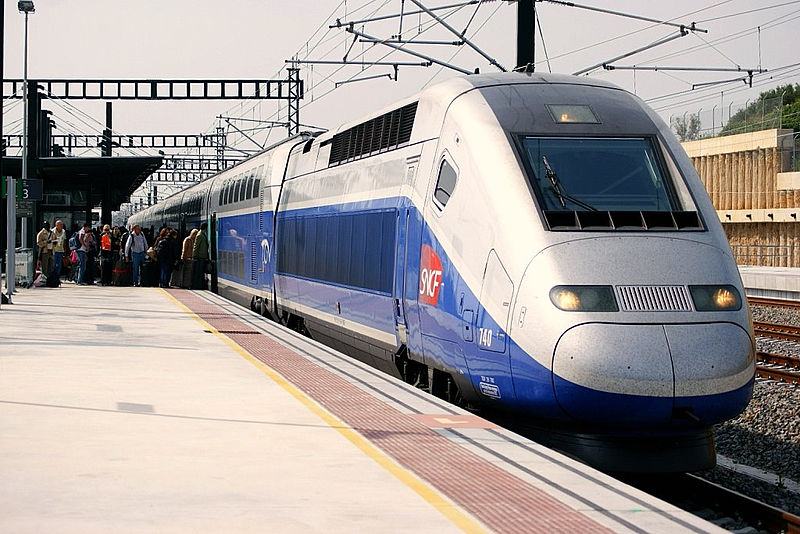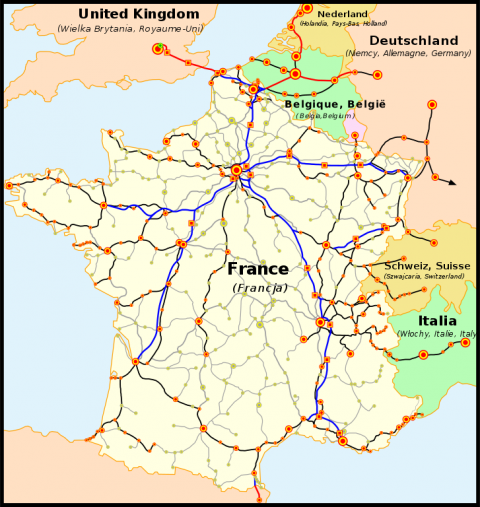Real Engineering
Published 20 Apr 2018Thank you to Shell for sponsoring this video. Listen to the Intelligence Squared Podcast for more: https://www.intelligencesquared.com/i…
Instagram:
https://www.instagram.com/brianjamesm…Additional Reading: https://go.shell.com/2qLmhWv
Get your Real Engineering merch at: https://standard.tv/collections/real-…
Patreon:
https://www.patreon.com/user?u=282505…
Instagram:
https://www.instagram.com/brianjamesm…
Twitter:
https://twitter.com/FiosrachtMy Patreon Expense Report:
https://goo.gl/ZB7kvKThank you to my patreon supporters: Adam Flohr, darth patron, Zoltan Gramantik, Henning Basma, Karl Andersson, Mark Govea, Mershal Alshammari, Hank Green, Tony Kuchta, Jason A. Diegmueller, Chris Plays Games, William Leu, Frejden Jarrett, Vincent Mooney, Ian Dundore, John & Becki Johnston. Nevin Spoljaric, Kedar Deshpande
Music:
“Sydney Sleeps Alone Tonight” by eleven.five & Dan Sieg [Silk Music]
“Hydra” by Huma-Huma, and “Dawn” by Andrew Odd [Silk Music]
Silk Music: http://bit.ly/MoreSilkMusic
February 11, 2020
Hydrogen – the Fuel of the Future?
February 8, 2020
Switching over from internal combustion vehicles to electric won’t be cheap … it really won’t be cheap!
At Spiked, Rob Lyons looks at the British government’s recent decision to ban sales of internal-combustion cars in 2035 rather than the earlier target date of 2040:
First, at present, electric vehicles cost a lot more than those with internal-combustion engines. For example, one car-buying advice website notes that the Peugeot e-208 is as much as £6,200 more than the standard 208 model. There are government subsidies to help with the cost of electric cars (currently £3,500), but can this be sustained if we all switch? It has already been cut from £4,500 in 2018.
That said, while the purchase price of an electric car may be higher, charging is a lot cheaper than fuelling a regular car. Electric vehicles cost between £4 to £6 per 100 miles to charge at home and £8 to £10 using public charge points, while petrol and diesel cars cost £13 to £16 per 100 miles in fuel (although 60 per cent of the fuel cost is tax).
In theory, maintenance should be cheaper, too, given that electric motors have fewer moving parts than petrol or diesel engines. But to further complicate matters, batteries gradually lose their capacity to hold charge over time. They have to be replaced at the cost of thousands of pounds every few years. (The warranties covering battery replacement varies by manufacturer: Tesla, for instance, offers an eight-year warranty, but the Renault Zoe is covered for just three years.)
Electric cars may be cheaper to own overall, but this is largely down to subsidies and tax breaks, including lower vehicle duties and not having to pay charges in low-emission zones. Still, with the entire car industry throwing its efforts into making electric cars cheaper and increasing battery capacity, costs may well come down somewhat, reducing the need for such breaks. Fingers crossed.
The cost to individual owners will be higher, but the costs to build up the electric charging infrastructure will be distributed among all consumers, not just the owners of vehicles:
This brings us to perhaps the biggest problem: where will the power come from and how will it reach us? Eventually shifting all the energy for cars from oil to electricity means producing much more electricity. Greens are pleased that electricity use is currently decreasing, and a greater proportion of electricity is coming from renewable sources. But the arrival of electric cars en masse would demand a whole lot more electricity, mostly to be used at night.
Unless we want to coat the landscape in wind turbines, which are unreliable in any event, we’ll need other sources of power. More nuclear? Fine by me. But will eco-warriors stand for that? Even if we can produce the juice, having lots of cars charging in the same area may overwhelm the local electricity networks. Who is going to pay for the upgrade?
When all of these factors are considered we have to ask if all this effort will really reduce greenhouse-gas emissions anyway. Digging up the resources required to create all those batteries will be hugely carbon-intensive. Perhaps the most likely outcome of banning sales of new petrol and diesel vehicles is that demand for second-hand vehicles will go up. We could end up like Cubans, nursing venerable old cars for years, way beyond their intended lifespans.
February 5, 2020
February 4, 2020
“Who could oppose such an obviously sound idea?”
A few pithy comments from Twitter on the Trudeau government’s apparent surprise that a few Canadians don’t think their regulate-the-internet plan is brilliant:
The thing to understand about this BTLR/Guilbeault fiasco is how commonplace it is. There are thousands of people in the Liberal/academic universe – the best and brightest – to whom the idea of gov’t licensing, regulating and subsidizing the media is entirely uncontroversial.
— Andrew Coyne (@acoyne) February 3, 2020
I’m sure he/they were genuinely taken aback at the response. Doesn’t *everybody* think the media should take instruction from a wise and enlightened gov’t, which would after all be run by wise and enlightened people like themselves? Who could oppose such an obviously sound idea?
— Andrew Coyne (@acoyne) February 3, 2020
Look at who’s on the panel that recommended it: law professors! People whose business It is to know about things like, say, the Charter of Rights. But then, given the courts’ appalling record on speech restrictions, perhaps they felt confident even this would be upheld.
— Andrew Coyne (@acoyne) February 3, 2020
Fellow Rush fan Matt Gurney finds the perfect lyrics for the occasion:
We’ve taken care of everything
The words you read
The songs you sing
The pictures that give pleasure
To your eye
One for all and all for one
Work together
Common sons
Never need to wonder
How or why https://t.co/OUurFwaokj— Matt Gurney (@mattgurney) February 4, 2020
CRTC regulating the internet – “Nobody elsewhere is proposing anything like it, and for good reason: because it’s insane”
Ted Campbell suggests that the Canadian government most recent brainfart is a “Tea Party moment” for Canadians:
One commentator on social media dubbed this […] the moment when Heritage Minister Steven Guilbeault said that the Trudeau regime plans to license news websites as a “Boston Tea Pary moment.”
N. Currier. Destruction of tea at Boston Harbor, 1846. [New York: N. Currier]
Retrieved from the Library of Congress – https://www.loc.gov/item/91795889/She was referring to the protest, in December of 1773, when angry American colonists (many dressed as Native Americans to try and hide their true identities) dumped several hundred chests of tea, imported by the East India Company, into Boston harbour to protest the taxes, on almost everything, that had been imposed, by Westminster to pay for the Seven Years War. Westminster felt it was only fair to tax the colonists equally, along with the people of the British Isles, because much of the war, called the French-Indian War, now, by Americans, was fought to protect them and their vital commercial interests. The American colonists disagreed, many on the principle that they should not be taxed without being represented in parliament. We know where it all ended.
It’s a good question. Most commentators seem to agree with me that the Trudeau regime has seriously overreached in supporting the Broadcasting and Telecommunications Legislative Review Panel’s recommendations that, somehow, the distribution of “news” should be regulated by the government. That is a far, far greater intrusion into the liberty of free Canadian citizens than a tax on staples was to Americans in 1773.
Andrew Coyne, writing in the Globe and Mail, opines that “The whole thing is just breathtaking – a regulatory power grab without precedent, either in Canada or the democratic world. Nobody elsewhere is proposing anything like it, and for good reason: because it’s insane. This kind of bureaucratic micromanagement, with its obsession with ‘cultural sovereignty’ and ‘telling ourselves our own stories,’ would have been hopelessly outdated in 1990. In 2020, it’s just embarrassing.” He’s right to use the word “insane,” ~ the proposal is quite possibly unconstitutional, just for a start, it is, certainly based on a deeply mistaken idea of what the internet actually is ~ and he’s equally right to say that every Canadian who doesn’t, actively, protest against this must be embarrassed because each is, for no good reason at all that I can see, supporting a proposal that makes Canada less, far less, of a liberal democracy and more like Ethiopia and Senegal (both with scores below 6.0, the threshold for a Flawed Democracy in the well regarded Economist Intelligence Unit’s latest democracy index) where he will visit this week … perhaps to learn from the leaders of authoritarian regimes what his next steps should be to embarrass Canada further.
Michael Geist on the jaw-dropping performance of Trudeau’s Canadian Heritage Minister last weekend:
In June 2017, the Standing Committee on Canadian Heritage committee recommended implementing tax on Internet services in a report on media. Within minutes, Prime Minister Justin Trudeau was asked about the proposal at a press conference in Montreal. Trudeau’s answer – which literally came as committee chair Hedy Fry was holding a press conference on the report – was unequivocal: No. The government was not going to raise costs of Internet services with an ISP tax. The committee recommendation was minutes old and the government wasted absolutely no time in killing the proposal.
Last week, the Broadcasting and Telecommunications Legislative Review Panel proposed a far broader regulatory vision for the Internet. Indeed, it is difficult to give the full breadth of this plan its due. I will be posting this week on some of the most harmful aspects of the plan, including regulating media organizations around the world with penalties in the hundreds of thousands of dollars for failing to obtain licences, regulating streaming companies despite their massive investment in Canada, regulating everything from app stores to operating systems, creating liability for harmful content that violates Canada’s commitments in the USMCA, undermining net neutrality, and increasing the costs of Internet-based services for Canadian consumers.
Over the weekend, Canadian Heritage Minister Steven Guilbeault was asked about the proposal. In particular, he was asked about the proposal to licence foreign news sites (the example used was Breitbart but it could just as easily have been the New York Times, BBC, CNN, Fox or MSNBC). The answer should have been easy: no.
Instead of “no”, Minister Guilbeault’s response was that it was “no big deal.”
On Monday morning, the minister appears to have reconsidered being quite so blatant in indulging his inner authoritarian control freak:
Guilbeault walked back the comments on Monday, stating that the government had “no intention to impose licensing requirements on news organizations,” nor will the government “regulate news content.”
“… Our focus will be and always has been that Canadians have diversity to high-quality news sources,” said Guilbeault to reporters in Ottawa.
This announcement comes after deep criticism of a previous announcement by the Liberal government, where they said they would force news organizations to apply for a licence.
Guilbeault’s announcement faced intense scrutiny from across the political spectrum with some commentators suggesting that it would be a dangerous attack on the freedom of the press.
January 31, 2020
“… the report envisions unprecedented government and regulatory intervention into the delivery of news services”
Michael Geist heaps scorn on the recommendations of a panel that would empower the CRTC to regulate the internet in Canada to a very high degree:
The Broadcast and Telecommunications Legislative Review Panel released its much anticipated report yesterday with a vision of a highly regulated Internet in which an expanded CRTC (or a renamed Canadian Communications Commission) would aggressively assert its jurisdictional power over Internet sites and services worldwide with the power to levy massive penalties for failure to comply with its regulatory edicts. The recommendations should be rejected by Innovation, Science and Industry Minister Navdeep Bains and Canadian Heritage Minister Steven Guilbeault as both unnecessary to support a thriving cultural sector and inconsistent with a government committed to innovation and freedom of expression.
[…]
Yet the strengths of the telecommunications and consumer rights portions of the report are overshadowed by a stunning set of recommendations related to Internet content, some of which are unlikely to survive constitutional scrutiny, likely violate Canada’s emerging trade commitments, and rest of shaky policy grounds. If enacted, the Canadian Internet would be virtually unrecognizable with the CRTC empowered to licence or require registration from a myriad of Internet services, mandate what Canadians see on those services, and intervene in commercial negotiations. The 235 page report will require several posts to address all of its aspects and implications (including notable CBC and copyright reforms), but this post seeks to set out its broad-based content regulatory vision and make the case that the panel’s plan should be firmly rejected by the government.
The foundation of the content section of the report is the decision to regulate all media content, which includes audio, audiovisual, and news content delivered by telecom. In doing so, the report envisions unprecedented government and regulatory intervention into the delivery of news services. It argues that there are three types of services that provide this content that require regulation where they access the Canadian market:
- Curators – services that disseminate media content with editorial control (broadcasters and streaming services such as Netflix, Spotify, and Amazon Prime)
- Aggregators – cable companies, news aggregators such as Yahoo News
- Platforms for Sharing – services that allow users to share amateur and professional content such as YouTube, Facebook and other platforms
The panel recommends that all of these kinds of companies be regulated (either by way of licence or registration), be required to contribute to Canadian content through spending percentages or levies, and comply with CRTC regulations on discoverability that would include regulatory rules on how prominently Canadian content is displayed within the service. The CRTC would be empowered to decide whether to exempt services from regulation with the power to levy huge penalties for failure to comply with its decisions (described as “high enough to create a deterrent foreign undertakings”).
Why The US Military Made GPS Free-To-Use
Real Engineering
Published 16 Jun 2017Get your Real Engineering shirts at: https://store.dftba.com/collections/r…
Patreon:
https://www.patreon.com/user?u=282505…
Instagram:
https://www.instagram.com/brianjamesm…
Twitter:
https://twitter.com/Fiosracht
Website:
http://www.RealEngineering.netThank you to my patreon supporters: Adam Flohr, darth patron, Zoltan Gramantik, Henning Basma, Karl Andersson, Mark Govea, Mershal Alshammari, Hank Green, Tony Kuchta, Jason A. Diegmueller, Chris Plays Games, William Leu, Frejden Jarrett, Vincent Mooney, Ian Dundore, John & Becki Johnston. Nevin Spoljaric
Once again thank you to Maeson for his amazing music. Check out his soundcloud here: https://soundcloud.com/maeson-1/tracks
January 30, 2020
Upgrading NORAD’s capabilities with AN/SPY-7(V)1 radar (aka “Aegis Ashore”)
Ted Campbell on the need to upgrade NORAD radar installations as part of a general refurbishment of the alliance’s capabilities:

Lockheed Martin’s Solid State Radar has been designated as AN/SPY-7(V)1 by the US government.
Image from Lockheed Martin/PRNewsfoto.
One of the elements which might be considered in modernizing and enhancing the North American Aerospace Defence Command (NORAD) surveillance, warning and control system is a new radar and some people have suggested that the AN/SPY-7(V)1 radar, sometimes called Aegis Ashore, might be a useful (and proven, it is in use, on land, in Japan, and will be fitted on Canada’s new Type 26 (destroyer-frigate) combat ships) solution. This radar is eminently suitable to be part of an enhanced (conventional) NORAD and of a CANUS continental ballistic missile defence system.
There are many technical (and logistical) advantages to using that radar on both our, Canadian, warships and in a land-based role, too.
The AN/SPY-7(V)1 radar produces a lot more information than do the current AN/FPS-117 and AN/FPS-124 radars which are used in the NORAD role, today, and were built in the 1980s using 1960s and ’70s technology.
(Please don’t worry about the AN/*** designations. They are part of a very sensible American system which was designed to make it simpler to identify both Army and Navy systems (hence the AN/ at the beginning). The three letters following the AN/ describe the system:
- The first letter describes the installation. F means Fixed, on the ground (land) and S means on a ship;
- The second letter means the type of equipment, and P means radar; and
- The third letter means purpose. S means search (detection and locating) and Y surveillance and control.
Thus the SPY-7 is a shipborne surveillance radar and the FPS-117 is fixed (land-based) search radar. The numbers just differentiate one system from another.)
If Canada chooses an advanced radar, like the SPY-7, two engineering problems will need to be addressed:
- First, these things use a lot more power than do the existing radars; and
- Second, they produce much, much more information which needs to be “transported” instantly, to control centres in places like Canadian Forces Base North Bay, where all the data from all the radars is analyzed and used to effect NORAD’s mission. If the radar sites are located below (about) 72°N, as would be the case for coastal radars in BC, NS and NL, this is not a huge problem because the station is within the “footprint” of the big, high bandwidth satellites in geostationary orbit. But if the radar site is too far North then a terrestrial (possibly microwave, maybe tropospheric scatter) network (in which each station needs electrical power, too) will have to be installed to move the data to a satellite ground station. (Or a non-geostationary, high bandwidth, satellite system will have to be deployed.)
January 25, 2020
QotD: The post-oil-crisis evolution of modern cars
Man I remember back in 1982, we all thought we’d be driving nothing but 3-cylinder diesels by the turn of the millennium. If you went back and told some gearhead in my high school class that in 2017 Dodge would be selling a “street legal” 10-second Hemi Challenger, he’d think you were talking about the 0-60 time of a 4-cyl car.
The computer changed everything. Not only in engine tuning and performance, but in design and modeling.
I had an example of a classic late Dark Ages car, an ’84 Trans Am with the LG4 305c.i. Rochester Quadrabog motor. A hunnert and fifty horsepower and nearly every engine function powered by enough dry-rotting vacuum tubing to reach to the moon and back…
Only a few years later and exotic computer-designed and controlled long-runner port fuel injection systems were common on domestic performance cars and HP numbers were on the right side of 200 for the first time in a decade.
It was coming out of an awful time. Like a friend wrote: When he went into seminary you could buy a Mustang with a nearly 400bhp engine option. When he left seminary, the Mustang was a Pinto.
Being a car enthusiast in America in the latter half of the 70s/first half of the ’80s was like being a dirt farmer in Fifth Century Britain, marveling at the weed-grown roads and disused aqueducts left by a race of giants and building your pig shed with stones looted from a burned library.
Tamara Keel, “Cars of the future from the past…”, View From The Porch, 2017-12-26.
January 20, 2020
The reasons HMS Queen Elizabeth has two islands – Russia copied the twin island design
Military TV
Published 5 Jan 2020Many have wondered why HMS Queen Elizabeth has two “islands”. Here we consider why she is the first aircraft carrier in the world to adopt this unique arrangement and the benefits it brings.
REDUNDANCY AND SEPARATION CAN BE GOOD
In a moment of inspiration back in 2001, an Royal Navy officer serving with the Thales CVF design team developing initial concepts for what became the Queen Elizabeth class, hit upon the idea of separate islands. There are several advantages to this design but the most compelling reason for the twin islands is to space out the funnels, allowing greater separation between the engines below. Queen Elizabeth class has duplicated main and secondary machinery in two complexes with independent uptakes and downtakes in each of the two islands. The separation provides a measure of redundancy, it increases the chances one propulsion system will remain operational in the event of action damage to the other. Gas turbine engines (situated in the sponsons directly below each island of the Queen Elizabeth class) by their nature require larger funnels and downtakes than the diesel engines (in the bottom of the ship). The twin island design helps minimise their impact on the internal layout.In a conventional single-island carrier design, either you have to have a very long island (like the Invincible class) which reduces flight deck space or, the exhaust trunkings have to be channelled up into a smaller space. There are limits to the angles this pipework may take which can affect the space available for the hangar. The uptakes can also create vulnerabilities, the third HMS Ark Royal was lost to a single torpedo hit in 1941, partly due to progressive engine room flooding through funnel uptakes.
The twin island design has several other benefits. Wind tunnel testing has proved that the air turbulence over the flight deck caused by the wind and the ship’s movement, is reduced by having two islands instead of one large one. Turbulent air is a hindrance to flight operations and aircraft carrier designers always have to contend with this problem. Twin islands allow greater flight deck area because the combined footprint of the two small islands is less than that of a single larger one. By having two smaller islands it allowed each to be constructed as a single block and then shipped to Rosyth to be lifted onto the hull. The forward island was built in Portsmouth and the aft island built in Glasgow.
This arrangement solves another problem by providing good separation for the main radars. The Type 1046 long range air surveillance radar is mounted forward while the Type 997 Artisan 3D medium range radar is aft. Powerful radars, even operating on different frequencies, can cause mutual interference or blind spots if the aerials are mounted too close together. Apart from a slim communications mast, both the Artisan and 1046 have clear, unobstructed arcs.
January 19, 2020
January 17, 2020
January 4, 2020
The Rise and Fall of the Japanese Zero
Real Engineering
Published 31 Aug 2018Patreon:
https://www.patreon.com/user?u=282505…
Instagram:
https://www.instagram.com/brianjamesm…
Twitter:
https://twitter.com/thebrianmcmanus
Discord:
https://discord.gg/s8BhkmNThank you to AP Archive for providing footage: https://www.youtube.com/channel/UCHTK…
Get your Real Engineering shirts at: https://standard.tv/collections/real-…
References:
[1] https://www.thoughtco.com/world-war-i…
[2] http://rwebs.net/avhistory/history/ze…
[3] http://aboutjapan.japansociety.org/im…
[4] https://www.history.com/news/the-akut…
[5] https://www.japanpowered.com/history/…
[6] https://www.warbirdforum.com/sakai.htmCredits:
Narrator/Director: Brian McManus
Co-Director: Mike Ridolfi (https://www.moboxgraphics.com/)
3D Animations: Eli Prenten (http://eliprenten.com/)
Research: Stephanie Sammann (https://www.stephanie-sammann.com/)
Sound: Graham Haerther (https://haerther.net/)
January 2, 2020
The 2010s … the best decade (so far) in human history
Matt Ridley explains why, despite all the doom and gloom in the daily headlines, the last ten years have been the best by almost any measure:
Let nobody tell you that the second decade of the 21st century has been a bad time. We are living through the greatest improvement in human living standards in history. Extreme poverty has fallen below 10 per cent of the world’s population for the first time. It was 60 per cent when I was born. Global inequality has been plunging as Africa and Asia experience faster economic growth than Europe and North America; child mortality has fallen to record low levels; famine virtually went extinct; malaria, polio and heart disease are all in decline.
Little of this made the news, because good news is no news. But I’ve been watching it all closely. Ever since I wrote The Rational Optimist in 2010, I’ve been faced with “what about …” questions: what about the great recession, the euro crisis, Syria, Ukraine, Donald Trump? How can I possibly say that things are getting better, given all that? The answer is: because bad things happen while the world still gets better. Yet get better it does, and it has done so over the course of this decade at a rate that has astonished even starry-eyed me.
Perhaps one of the least fashionable predictions I made nine years ago was that “the ecological footprint of human activity is probably shrinking” and “we are getting more sustainable, not less, in the way we use the planet”. That is to say: our population and economy would grow, but we’d learn how to reduce what we take from the planet. And so it has proved. An MIT scientist, Andrew McAfee, recently documented this in a book called More from Less, showing how some nations are beginning to use less stuff: less metal, less water, less land. Not just in proportion to productivity: less stuff overall.
This does not quite fit with what the Extinction Rebellion lot are telling us. But the next time you hear Sir David Attenborough say: “Anyone who thinks that you can have infinite growth on a planet with finite resources is either a madman or an economist”, ask him this: “But what if economic growth means using less stuff, not more?” For example, a normal drink can today contains 13 grams of aluminium, much of it recycled. In 1959, it contained 85 grams. Substituting the former for the latter is a contribution to economic growth, but it reduces the resources consumed per drink.
As for Britain, our consumption of “stuff” probably peaked around the turn of the century — an achievement that has gone almost entirely unnoticed. But the evidence is there. In 2011 Chris Goodall, an investor in electric vehicles, published research showing that the UK was now using not just relatively less “stuff” every year, but absolutely less. Events have since vindicated his thesis. The quantity of all resources consumed per person in Britain (domestic extraction of biomass, metals, minerals and fossil fuels, plus imports minus exports) fell by a third between 2000 and 2017, from 12.5 tonnes to 8.5 tonnes. That’s a faster decline than the increase in the number of people, so it means fewer resources consumed overall.
H/T to Damian Penny for the link.
January 1, 2020
Let there be LIGHT! – December 31st – TimeGhost of Christmas Day 8
TimeGhost History
Published 31 Dec 2019The electrical age was ushered in by Thomas Edison’s illumination of Menlo Park 140 years ago. For the first time, electrical lighting was demonstrated to a public audience.
Join us on Patreon: https://www.patreon.com/TimeGhostHistory
Hosted by: Indy Neidell
Written by: Tom Maeden and Spartacus Olsson
Directed by: Spartacus Olsson and Astrid Deinhard
Executive Producers: Bodo Rittenauer, Astrid Deinhard, Indy Neidell, Spartacus Olsson
Creative Producer: Joram Appel
Post-Production Director: Wieke Kapteijns
Research by: Tom Maeden
Edited by: Mikołaj Cackowski
Sound design: Marek KamińskiColorization by:
Dememorabilia – https://www.instagram.com/dememorabilia/Soundtracks from Epidemic Sound:
Howard Harper-Barnes – “A Sleigh Ride Into Town”
Traditional – “Carol of the Bells”A TimeGhost chronological documentary produced by OnLion Entertainment GmbH.
From the comments:
TimeGhost History
4 hours ago
On the eighth day of Christmas Thomas Alva Edison said: let there be light. Now, as we say say in the video, we know that Edison was not the only inventor of incandescent light, perhaps not even the inventor at all. But as with so many other things he brought the world, he was the first one to make it practicable, and perhaps more importantly; make it popular.It’s hard to fathom how monumental to humanity this day, 31st of December, 1879 is — the world literally changed forever with the flick of a switch. Our work behavior, or sleeping patterns, our leisure time, socializing, sex, media, industry, cooking, aesthetics … well more or less everything started to change on this day. In 2019 hardly anything we do is possible without it — especially not watching this video, which after all is brought to your eyes by one of many, many derivative innovations of the incandescent light bulb. In fact it’s 140 years later and we are still researching the depths of the change that incandescent light brought upon humanity.
Most of us take it for granted by now, artists celebrate it, entire industries depend on it, Luddites deplore it, environmental studies are showing that it might be harmful to other animals, neurologists are researching the effects of changed sleeping patterns on your brains, the production of energy we need to light our world has contributed to dramatic environmental changes on the entire planet, and the innovations coming from it just keep on pouring out of labs like Menlow Park every day. What do you think?
Happy New Year! May it be enlightening.


